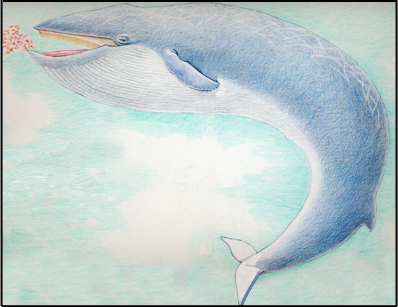

The blue whale is the largest animal in the world. They measure up to 100 feet long and weigh as much as 150 tons (300,000 pounds). Their heart alone can weigh 2,000 pounds. Scientists think that there once were 300,000 blue whales swimming the oceans. Then modern whaling began and quickly the blue whale population disappeared. By 1960, scientists thought that there were only 1,000 left on Earth.
In 1972, they were protected from hunting by the Marine Mammal Protection Act. Then in 1973, they were given added protection by the endangered species act. Even the International Whaling Commission banned whalers from taking blue whales.
Blue whales numbers are rising again slowly. Scientists believe there could be as many as 15,000 now. Only time will tell how this giant of the ocean will recover.
When you research information you must cite the reference. Citing for websites is different from citing from books, magazines and periodicals. The style of citing shown here is from the MLA Style Citations (Modern Language Association).
When citing a WEBSITE the general format is as follows.
Author Last Name, First Name(s). "Title: Subtitle of Part of Web Page, if appropriate." Title: Subtitle: Section of Page if appropriate. Sponsoring/Publishing Agency, If Given. Additional significant descriptive information. Date of Electronic Publication or other Date, such as Last Updated. Day Month Year of access < URL >.
Amsel, Sheri. "Whale (Blue)" Exploring Nature Educational Resource ©2005-2024. December 13, 2024
< http://www.exploringnature.org/db/view/blue-whale >
